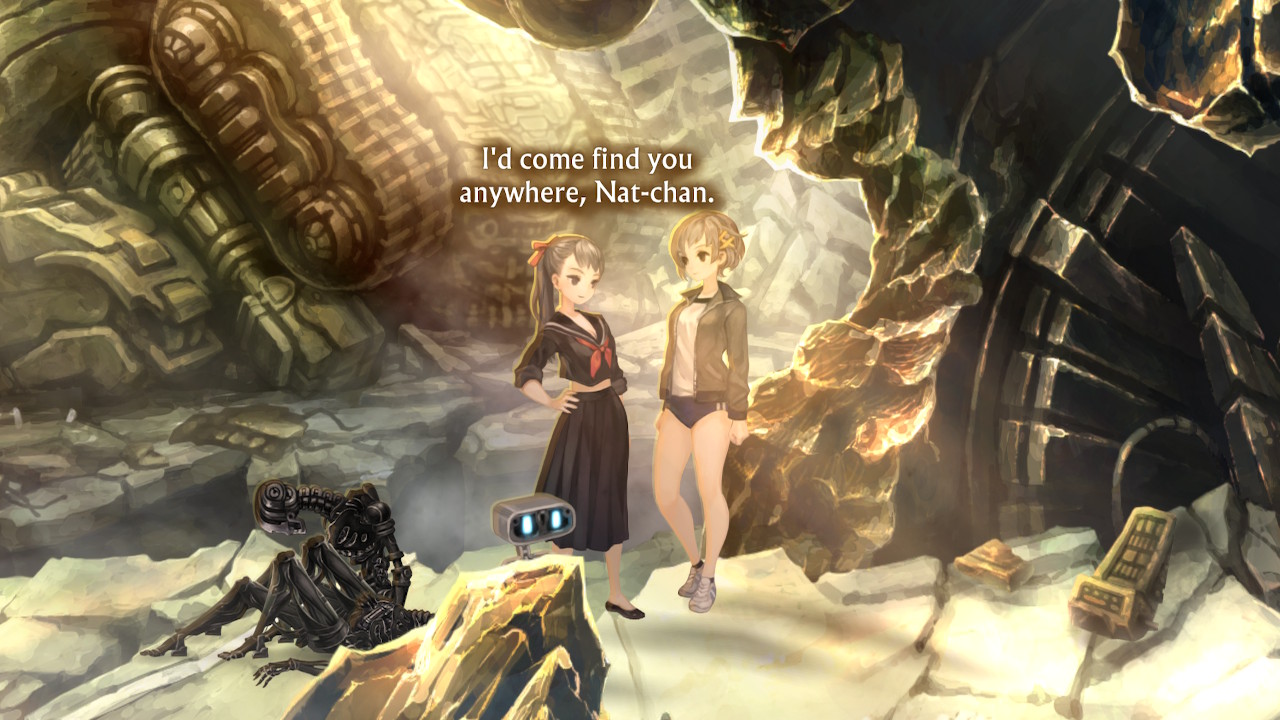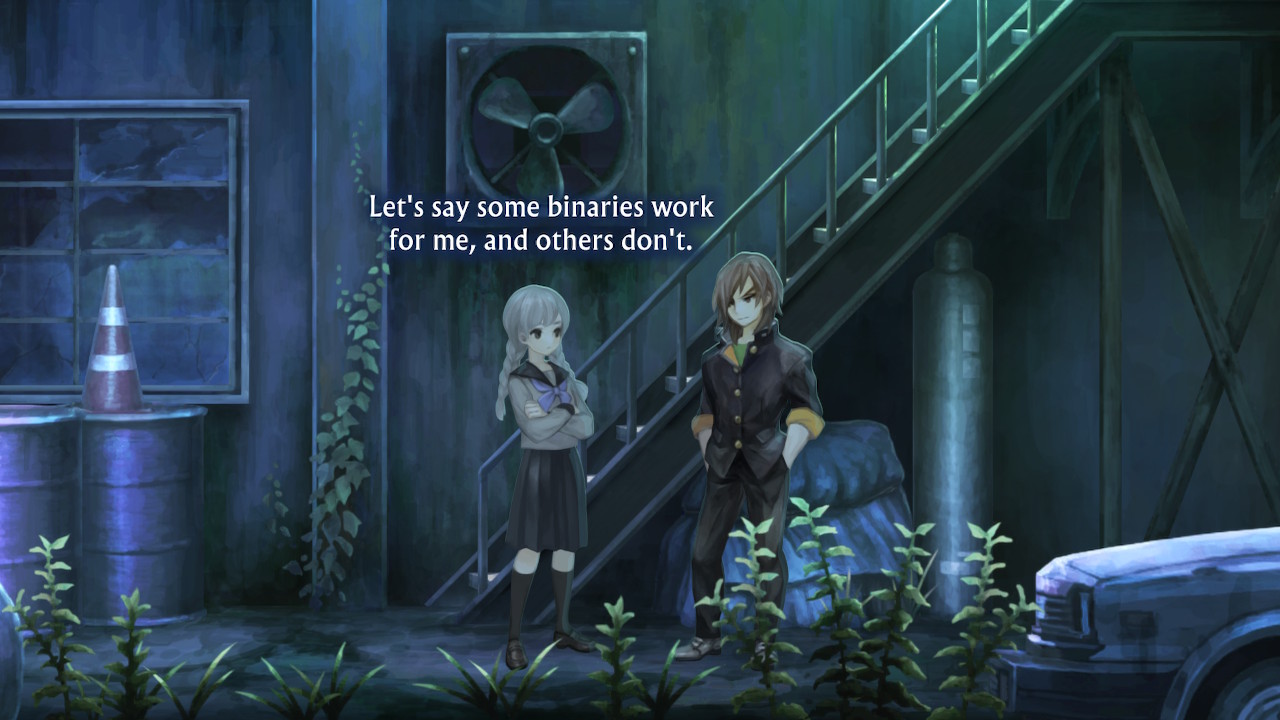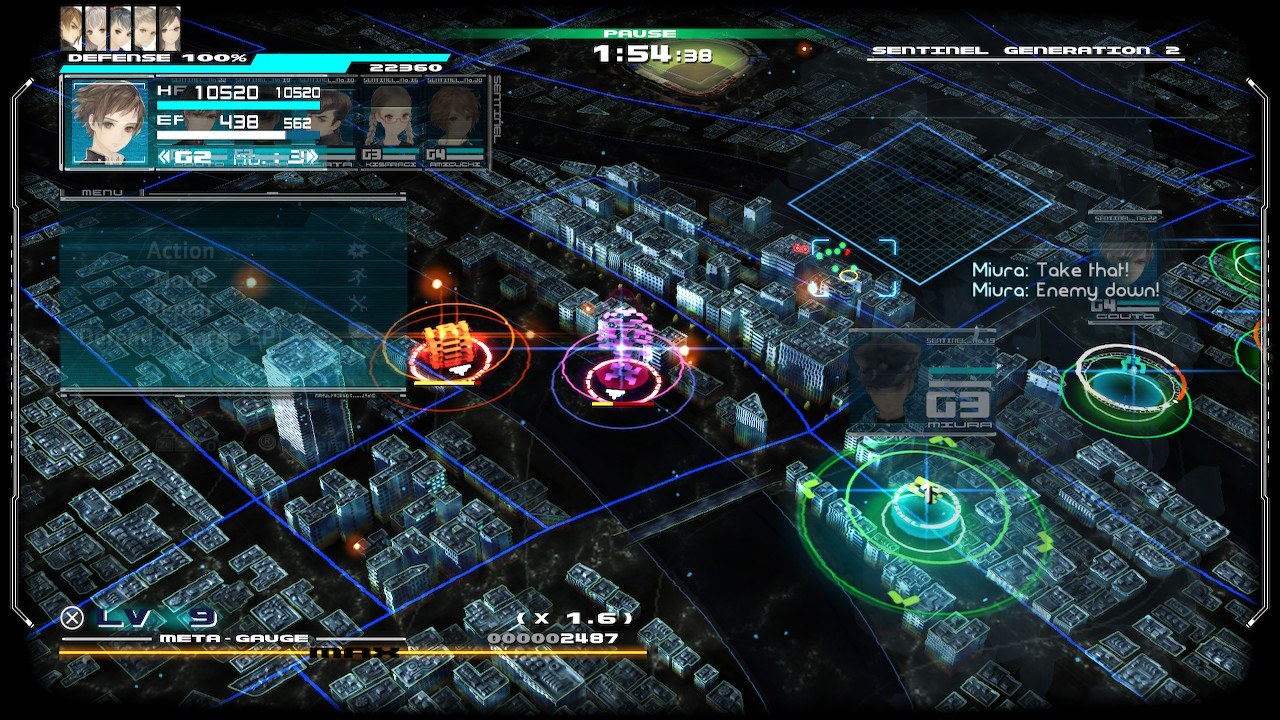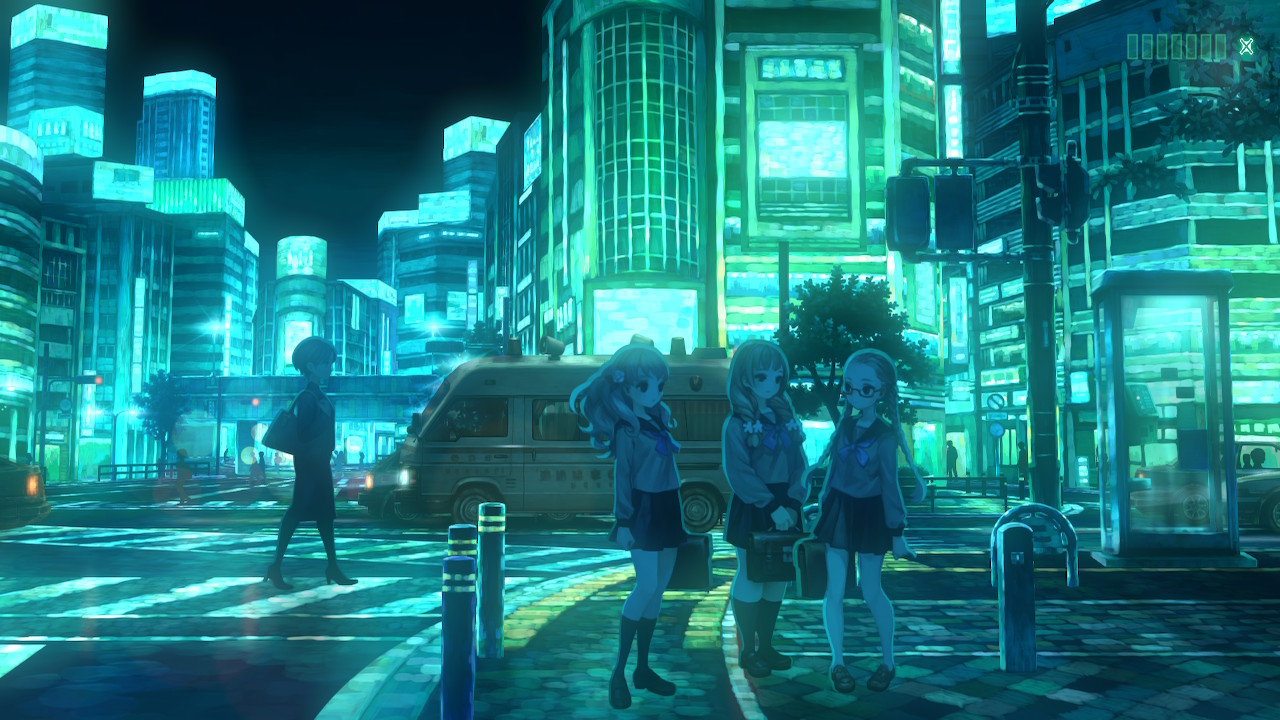If Persona 5 and Stranger Things had a love child, it’d look an awful lot like 13 Sentinels: Aegis Rim. 13 Sentinels’s enthralling characters, spirited voice work, and eye-catching style remind me of my most cherished adventures with the Phantom Thieves, while its razor-sharp sci-fi narrative eclipses that of Netflix’s hit series. When you toss in its contemplative gameplay and the risks Vanillaware took with its queer themes and intersecting stories, this RPG stands among the strongest on Switch. Though its RTS combat could use more depth, and you probably need to take notes to follow its narrative, the rest of 13 Sentinels is so compelling that the overall package is poised to become the stuff of legend.
If plots full of jaw-dropping twists and turns are your thing, you’ll dig 13 Sentinels. It tells a non-linear story through visual novel chapters from the perspectives of 13 teenagers, each offering a different viewpoint on events dating from the recent past to the distant future. The sprawling cast spends this 30-hour adventure piecing together why Kaiju aliens are invading Japan and battling those same Kaiju in highrise-tall sentinel robots straight out of Gundam Wing. Along the way, they grapple with complex themes that’ll resonate with most players — young and sometimes unrequited love, the bonds of friendship, and queer identity chief among them.
This narrative unfurls through 13 character stories, each comprised of 20-minute-long chapters you complete in almost any order you choose. Chapters overlap so that the star of one will be a villain, ally, or background character in another, and you play through them in a 2D sidescroller reminiscent of classic point-and-click adventures. In each chapter, you explore a teen’s stunningly illustrated home, school, or city, engaging with their friends, foes, and environments to advance their individual story and the overarching narrative.

Everyone should enjoy Remembrance Mode – aka story mode – without spoilers, but I’ll say that when the character arcs culminate in the final showdown, they tell a tale for the ages. Like Lost and other character-focused stories revolving around an overarching mystery, 13 Sentinels‘s narrative had me constantly theorizing until the closing chapter, when it blew my expectations out of the water. Even the most obscure plot threads inform the larger story in satisfying ways, lending importance to every detail. The episodic structure also keeps the pace even and within your control, and I relished hopping between character stories when I was in the mood for one with a different tone.
Speaking of characters, they’re all nuanced, relatable, and endearing in equal measure. Initially, some of the 13 protagonists do resemble anime tropes. But as they build connections by working together to save their world, they start showing their deeper selves and bridging social and other gaps that once divided them, making their growth and relationships feel organic. Somehow, they also manage to be laugh-out-loud funny while playing heroes. Takatoshi’s constant cravings for Yakisoba Pan, Juro’s ironic obsession with mecha movies, and Tomi’s whip-smart sarcasm kept me chuckling throughout, even as Kaiju closed in. Vanillaware uses everybody to inject lighthearted humor into this otherwise dystopian world, enlivening this universe and cast without detracting from the gravity of their quest.
Fantastic voice acting also animates everyone you meet in 13 Sentinels. Nearly all dialogue is voiced, and at least on the English dub I enjoyed, it all oozes personality. The actors’ range of emotion is impressive and left me with a strong sense of the fear, anguish, and hope the protagonists felt. Kaiji Tang, whom you may recognize as Ichiban in Yakuza: Like a Dragon, steals the show as the lovable Takatoshi by breathing extraordinary life into the latter’s thinly veiled sexual confusion.

Takatoshi’s sexual confusion is one of the most intriguing aspects of 13 Sentinels. Vanillaware boldly centers his story around his relationship with a non-binary teen, Okino, and they handle the pairing with a refreshing blend of grace, dignity, and humor. Takatoshi’s gradual, pained embrace of his attraction to Okino resembles many LGBT people’s journeys, albeit without as much anxiety as a real teenager is bound to suffer. His angst-ridden battles with internalized homophobia and his general awkwardness in even thinking about his sexuality are sure to speak to many players.
The Takatoshi-Okino relationship can sometimes feel fetishistic, though, since Takatoshi directs most of his affection toward Okino when the latter wears feminine clothes. Other characters sometimes regard Okino as a crossdresser, an offensive, reductionist stance that doesn’t do justice to their non-binary identity. Nonetheless, the portrayal of queerness here is the most nuanced I’ve seen in any JRPG, and it deserves credit for raising the bar — even if the bar isn’t as high as I want it to be.
I can sing the praises of 13 Sentinels‘s narrative and cast for another 1000 words, but they do leave some room for improvement. Principally, the story becomes tough to follow. Many chapters deluge you with obtuse details, unfamiliar characters, and questions about vague sci-fi concepts the game doesn’t explain until its end. Story delivery can also feel haphazard, with chapters depicting events out of chronological order. Did I mention the story takes place in 2105 and 1984? And 1945 and 2025, among other points in time. There are also different dimensions, androids in human skin, and, of course, clones. Lots of clones.
Analysis Mode — a library of informational files you can review and events you can replay — helped me keep track of the expansive cast and dense narrative, but I also needed to take notes to follow along. Still, I’m not confident I understand some plot threads, especially those centering on reincarnation. It speaks volumes, then, that the confusion 13 Sentinels left me with didn’t detract from my enjoyment of its story. I’m still in awe of this fascinating world and the memorable people who inhabit it, and bewilderment be damned, 13 Sentinels was the most moving VN experience I’ve ever enjoyed.

Thinking of 13 Sentinels as a VN does it a favor because its combat isn’t so remarkable. Destruction Mode thrusts the 13 teens into the cockpits of their sentinels, which they pilot to rip through Kaiju in top-down, real-time with pause battles. Some missions task you with special objectives, but they all boil down to protecting your terminal while eliminating Kaiju. Each sentinel boasts abilities familiar to anyone who’s played a strategy title: some focus fire on one Kaiju or blast groups with AOE missiles, while others shield allies or lay down supportive and comically overpowered sentry guns. Using Meta-Chips earned from successful battles, you can tweak your sentinels’ stats and abilities to emphasize whatever playstyle suits your fancy . However, sentinels come in one of four flavors that are best suited to defined roles: melee, long-range, aerial assault, and balanced. You need to diversify your party of six sentinels since encounters toss in flying and other specialized Kaiju that can be a pain if you don’t have the right loadout.
These mechanics produce a serviceable but not superb combat experience. The novelty of tinkering with sentinels and strategies wore off a few hours into Destruction Mode, when I began pining to return to the story. Battles aren’t very deep; spamming your most potent attacks is almost always the optimal path to success, and Kaiju do little more than creep toward you while launching projectiles. At the same time, many encounters are downright overwhelming. Some blanketed my screen with hundreds of enemies at once, leaving me paralyzed with indecision. Maps are also devoid of obstacles or resources to use to your tactical advantage – a missed opportunity that puzzled me. Luckily, you don’t need to spend more than a handful of hours in Destruction Mode to access the final story chapters, and you can select a casual difficulty that makes battles brief affairs. Since combat ate up so little time, it didn’t detract from my enjoyment of the otherwise-stellar gameplay experience.

13 Sentinels looks and sounds just as good as you’d expect from a Vanillaware title. In Remembrance Mode, characters, environments, and animations exude hand-drawn charm that immerses you in this gorgeous world, and brilliant use of light and color enlivens everything, even drab 80’s apartment buildings. Destruction Mode opts for a wireframe aesthetic hearkening to early arcade titles, augmenting the 80’s vibe the teens embody and creating a nice contrast to the story’s exuberant style. The soundtrack is strong, featuring an engaging collection of mysterious, dark, and upbeat tracks that complement the diverse tones the game conveys so well.
Vanillaware takes many risks with 13 Sentinels, and nearly all of them pay off — few titles can boast a story as strong, a cast as memorable, or a world as stylish as this one. My time with 13 Sentinels was nothing short of magnificent, even though its combat felt undercooked and its narrative was daunting to follow. Its refreshing handling of queer issues alone ensures its mark in genre history. 13 Sentinels is a love letter to storytelling no one should miss, and it’s one I’m anxiously hoping Vanillaware follows up on sooner rather than later.




